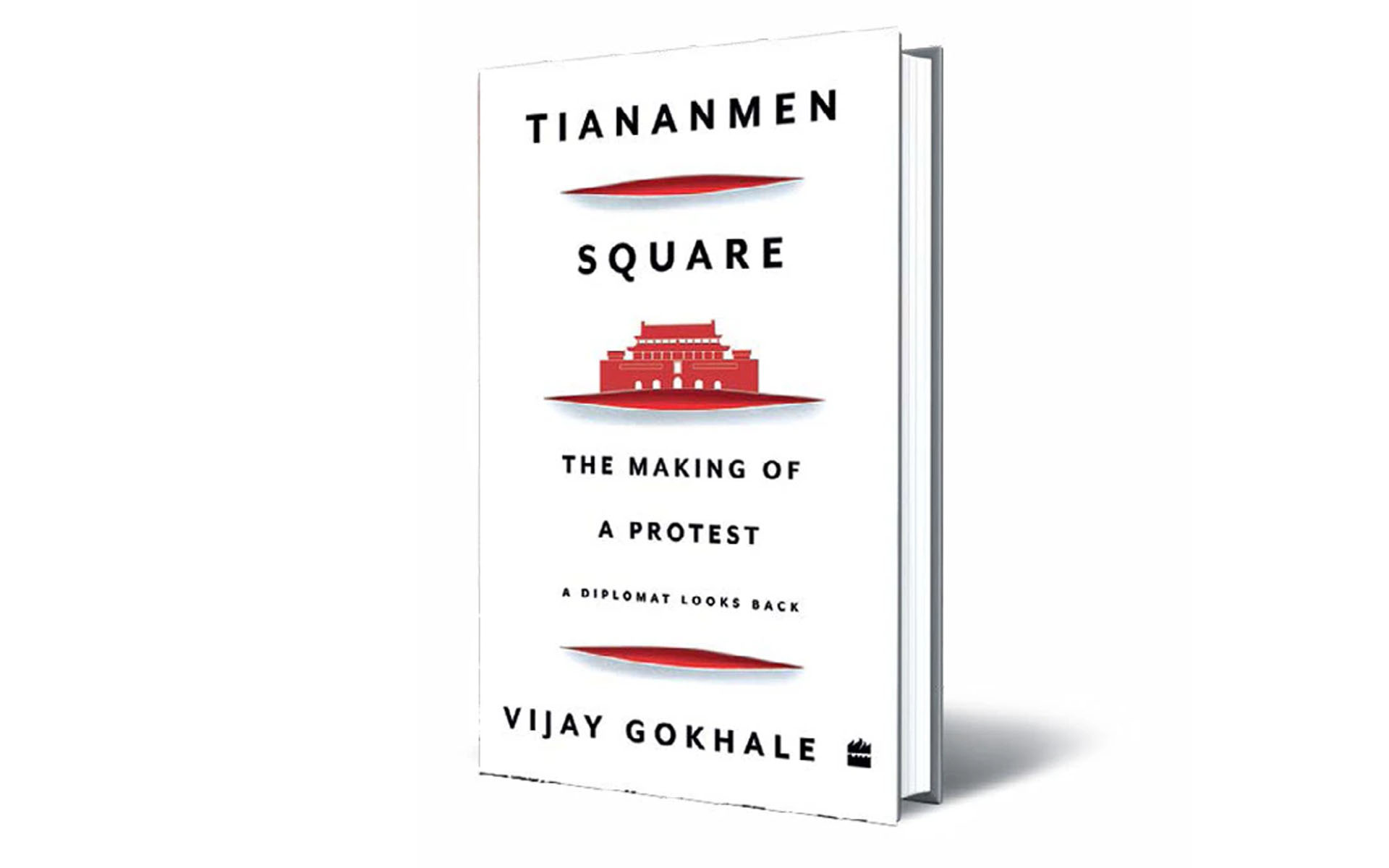
The book “Tiananmen Square: The Making of a Protest” was written by Vijay Gokhale. Vijay Gokhale is a former Foreign Secretary of India, a seasoned diplomat, and one of the prominent scholars in the areas of foreign policy and international relations. Gokhale also served as the Ambassador of India to China. He has researched and published widely on China affairs from Indian foreign policy perspectives. He is also considered an expert on China. His most recent publication is After Tiananmen Square (2022). The Long Game: How the Chinese Negotiate with India (2021) is another popular book.
This book was first published in India by HarperCollins Publishers in 2021. With a volume of 183 pages, the book contains ten chapters that discuss, in detail, the historical incident that occurred in the spring and early summer of 1989 in China.
The author provides substantial background and political context to explain how the incident unfolded. He has carefully and sequentially connected every point of activity. Being a witness to these developments, this book helps clarify the reality and avoid the misinterpretation and exaggeration that most Western media and scholars are often accused of.
It is also useful to understand the importance of leadership in times of crisis.
The author is both influenced and impressed by the leadership of Deng Xiaoping. He succinctly presents the internal dynamics of the Chinese Communist Party. Deng was victimized during Mao’s period and the Cultural Revolution. The first chapter is about the principal player, Deng Xiaoping—how he rose from the bottom to the top of the leadership and how he helped transform China from a fragile economy to the solid foundation we see today.
Deng brought a sea change in foreign policy. Moving from aloofness and hostility to engagement with both Russia and the U.S. was a landmark shift in China’s diplomatic approach. He adopted a policy of balance between the two powers. Perhaps his most notable success—without any aggression—was the return of Hong Kong from the United Kingdom to China. According to the book, Deng Xiaoping started modernization in four key sectors: agriculture, industry, science and technology, and national defense (p. 8). The concept of Special Economic Zones (SEZs) was also introduced in various provinces, drastically transforming the Chinese economy (p. 10).
The second chapter sets the background of the principal actors involved in the Tiananmen Square incident of 1989. The author also discusses key figures alongside Deng Xiaoping who contributed to laying the foundation of modern China. Among them, Zhao Ziyang, Hu Yaobang, and Li Peng were considered Deng’s close associates.
In the following chapter, the book discusses urban reforms and price adjustments to reflect true market value. Ideological differences within the party became heated debates that reached a peak. Deng’s own protégés began to oppose him, leading to internal difficulties within the party and hindering the country’s reform process. Ultimately, this culminated in the Tiananmen Square events.
In the later chapters, the book describes in detail the beginning and full series of events leading up to June 4, 1989—the day the political struggle peaked, becoming a turning point for China in terms of leadership transition and national stability. Deng Xiaoping’s shrewdness in managing the domestic crisis is a major focus. The June 4 incident marked the end of a decade of political and economic experimentation by the Chinese Communist Party (p. 131).
The author maintains that the Tiananmen Square incident was purely a leadership struggle within the party and not a mass uprising. Deng not only resolved the leadership issue but also ensured the country’s stability. He was deeply concerned about economic stability. It was a great miracle, the author argues, that in just a single generation, the party elite transformed from a stern band of Mao-suited ideologues to a wealthy, business-friendly ruling class (p. 139). He also claims that core communist ideology has now faded, and the Chinese Communist Party primarily justifies its rule through economic performance and nationalism.
The author further argues that the low-hanging fruits of economic growth have already been harvested, and the country now faces multiple challenges: a shrinking population, a declining workforce, falling household savings, and the rising costs of social welfare for an aging population. The future of China’s leadership and the country itself depends on how well it navigates these turbulent waters.
While Western powers have adopted decoupling and containment strategies against China’s rise, China has responded with new initiatives such as the Belt and Road Initiative, an infrastructure development strategy aimed at strengthening global influence.
This book is not only useful for understanding the 1989 incident but also offers insight into the series of political upheavals that China has undergone since the formation of the People’s Republic in 1949. The author’s first-hand witnessing of events and his continued engagement in Chinese affairs make this a particularly authentic and insightful read.
He rightly points out:
“While thirty years have passed, it still remains an event of seminal importance in recent Chinese history. China has changed, yet the communist system remains. Personalities have come and gone, but the Red Aristocracy still rules China and remains focused on self-preservation and self-perpetuation.”